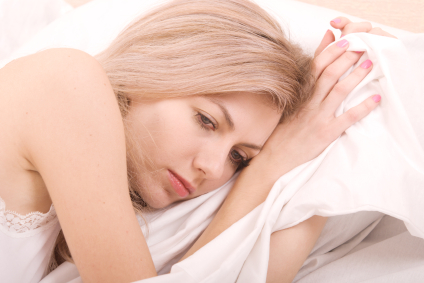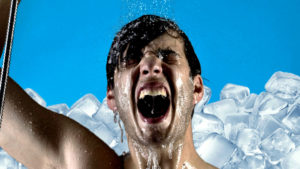
by Heythem Naji

Feeling sluggish and tired? Imagine a simple routine that can help you tackle these issues, leaving you feeling refreshed and more focused. This experience doesn’t involve expensive therapy sessions – it’s all about understanding the power of temperature change.
Welcome to the world of contrast therapy, a method that combines the warmth of a sauna with the refreshing chill of a cold shower. It may sound extreme, but you might be surprised by its many benefits.
Today, we’ll explore contrast therapy, focusing on why taking a cold shower after a sauna session could be the key to optimal health. Plus, we’ll provide a step-by-step guide to implementing this routine safely and effectively.
Ready to step into the contrasting temperatures?
What is Contrast Therapy?
Contrast therapy involves alternating between heat (such as a sauna) and cold (like a cold shower). When you step into a sauna, your body responds by sweating, relieving stress, enhancing cardiovascular health, detoxifying the body, and improving skin health.
On the other hand, a cold shower after the sauna builds your resilience, boosts your mood and promotes better sleep. The contrast between the two temperatures can bring benefits greater than the sum of their parts.
The Science Behind Contrast Therapy
This alternating method, known as contrast therapy, manipulates the body’s physiological responses to heat and cold – vasodilation (expansion of blood vessels) and vasoconstriction (contraction of blood vessels). The heat leads to vasodilation, leading to circulation throughout your body. The cold triggers vasoconstriction, pushing the blood deeper into the body, protecting your core organs, and conserving heat.
This process creates a dynamic ‘pump-like’ motion, flushing out toxins, reducing inflammation, and speeding up recovery. Contrast therapy enhances physical recovery and contributes to the overall resilience and robustness of your body’s internal systems.
Reasons Why You Should Adopt Contrast Therapy
While contrast therapy is gaining recognition among wellness practitioners for its multiple benefits. Here are some compelling reasons why you should consider integrating this therapy into your routine:
- Improved Circulation: The alternating heat and cold help boost overall blood flow, which is crucial for good health.
- Enhanced Skin Health: The sauna’s heat opens up pores. At the same time, the cold shower closes them, preventing dirt and bacteria from entering and promoting healthier skin.
- Strengthened Immune System: Contrast Therapy stimulates immune response, enhancing your body’s resilience against stress and illness.
- Increased Metabolism: The sudden temperature changes from sauna to cold shower can ramp up your metabolic rate, helping in weight loss and boosting energy levels.
- Better Mood and Reduced Stress: Contrast therapy can be a natural mood booster, reducing anxiety and potentially managing symptoms of depression.
- Prevention of Muscle Soreness: Alternating between hot and cold can change your body’s perception of pain, reducing or preventing Delayed Onset Muscle Soreness (DOMS).
- Reduction of Swelling: Contrast therapy can decrease swelling by increasing circulation, thus preventing fluid buildup in a specific area.
- Decrease in Fatigue: Contrast therapy can combat post-workout fatigue more efficiently than rest alone.
Tools and Techniques for Contrast Therapy
Contrast therapy can be carried out with various tools, each with unique advantages. Here’s an overview of 3 commonly used tools: showers, ice baths, and saunas. Understanding these will allow you to make an informed choice based on your needs and preferences.
-
Showers
Using your home’s shower system could be the perfect starting point for those new to contrast therapy or looking for a simple and affordable option. This method doesn’t require any additional equipment or significant investment.
A shower allows you to alternate between hot and cold water quickly, making applying contrast therapy techniques easy.
Showers provide an easily accessible way to begin exploring the benefits of contrast therapy.
-
Ice Baths
 Ice baths represent a more advanced level of cold exposure. They are especially popular among athletes for their significant recovery benefits.
Ice baths represent a more advanced level of cold exposure. They are especially popular among athletes for their significant recovery benefits.
An ice bath involves putting your body in cold water, often with added ice.
This method stimulates more vasoconstriction than a cold shower, flushing out toxins and reducing inflammation more effectively.
Additionally, ice baths have decreased muscle soreness, making them a valuable tool for post-workout recovery.
-
Saunas
Saunas provide powerful and effective heat exposure for contrast therapy. They offer a full-body heat experience, which enhances cardiovascular health, detoxifies the body, relieves stress, and improves skin health by opening up pores.
Sauna use has been associated with numerous health benefits, including reduced risk of cardiovascular diseases and improved mental health.
Each tool offers unique benefits and can be used effectively in a contrast therapy routine. The choice between them depends on your preferences, available resources, and specific health goals.
The Contrast Therapy Step-By-Step Guide
Contrast therapy doesn’t have a one-size-fits-all approach. However, following a well-established protocol can help you get all the benefits. Here’s a simple yet effective guide:
- Begin with heat exposure for about 10-15 minutes.
- Afterward, expose yourself to the cold for about a minute.
- Return to the heat for another 10-15 minutes.
- Repeat the cold for another minute.
- You can repeat this cycle 3 to four 4 times.
- Always end the session with cold exposure.
Remember, your body will adapt to the temperature changes over time. Adjust the durations and temperatures accordingly.
How To Stay Safe With Contrast Therapy
While contrast therapy offers plenty of benefits, it’s crucial to ensure safety while practicing it. Here are some tips to keep in mind:
- Start Slowly: Don’t start with extreme temperatures. You can gradually adjust the temperatures over time.
- Pay Attention To Your Body’s Response: Monitor how your body reacts to the contrasting temperatures. If you feel dizzy or nauseous, get out!
- Hydrate: Hydrating your body will help you handle the temperature changes better.
Wrapping Up
Contrast therapy might be your secret weapon against sluggishness, fatigue, and anxiety. This method offers many benefits, from improved circulation and skin health to increased metabolism, reduced stress, and enhanced immune function.
A step-by-step approach involving alternating between heat and cold helps integrate this routine safely into your life. Remember to adapt to the temperatures gradually and always stay attentive to your body’s responses.
I’ve found contrast therapy to be an incredible tool. It has significantly improved my muscle recovery and relaxation post-workouts. It has offered a calming effect whenever I feel anxious or depressed. Starting my day with this therapy makes me ready to tackle the day ahead. If you’re looking for a simple, cost-effective wellness routine, consider giving contrast therapy a try!

Heythem is a psychologist and blogger dedicated to teaching mental and physical health. Heythem’s Blog integrates the complexities of mind and body, giving comprehensive, actionable insights by combining professional expertise with a personal narrative.


Be the first to comment